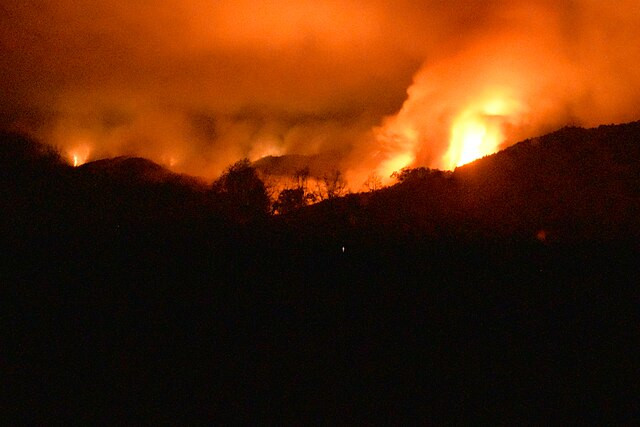Multiple wildfires in North Carolina and South Carolina have prompted evacuation orders and a statewide burning ban in South Carolina, as dry, windy conditions continue to fuel the flames. Officials in both states reported several large fires on Saturday, with emergency responders working to contain them amid worsening fire conditions.
In Polk County, North Carolina, a brush fire erupted along U.S. Highway 176 between the towns of Tryon and Saluda, quickly spreading up a nearby mountain. According to the North Carolina Fire Service, the fire had burned at least 400 acres and remained at zero percent containment as of late Saturday night. Fire officials warned that structures were at risk, with damage assessments scheduled for Sunday morning.
Residents along the affected stretch of highway were ordered to evacuate, with Polk County officials cautioning that the fire was spreading rapidly. "Residents can expect a heavy fire department presence in the Bear Creek, Hanging Rock, Rhododendron Dr., Oceanview Dr., and Meadow Lark Dr. areas as crews work to protect homes and reduce fire fuels," Saluda Fire and Rescue said in a statement. Displaced residents were directed to a shelter at the Polk County Meeting Place in Columbus.
South Carolina officials have also responded to several wildfires, including one in Horry County that prompted evacuations in the Carolina Forest area, approximately 10 miles west of Myrtle Beach. The Horry County Fire Rescue Department said crews were actively working to contain the fire and warned that conditions could evolve rapidly.
"Crews are continuing to work a large wildfire near Carolina Forest," the department posted on Facebook. "Horry County is monitoring the weather forecast and preparing to adjust course in our life safety and property protection plan should conditions evolve."
South Carolina Gov. Henry McMaster issued a statewide burning ban on Saturday in response to the worsening wildfire conditions. "Anyone who starts a fire in the state will go to jail," McMaster warned, as fire crews continued to battle multiple blazes across the state.
Efforts to contain the fires in both states included aerial water drops. Two planes and a Blackhawk helicopter were deployed Sunday morning to assist firefighters on the ground, according to South Carolina State Rep. Tim McGinnis. Additionally, tractors were brought in to dig firebreaks in an effort to contain the flames.
The National Weather Service had issued a red flag warning for much of western North Carolina and upstate South Carolina on Saturday, indicating critical fire weather conditions. That warning expired late Saturday night, but a Fire Danger statement remained in effect for parts of South Carolina, including Columbia and Greenville-Spartanburg, until 8 p.m. Sunday. The agency cautioned that "dry fuel and low relative humidity" could contribute to further fire outbreaks.
Authorities have linked at least one of the North Carolina fires to a downed power line along U.S. Highway 176. The fire, which ignited on Saturday afternoon, spread rapidly due to dry conditions and strong winds, exacerbating the challenges for firefighters.






